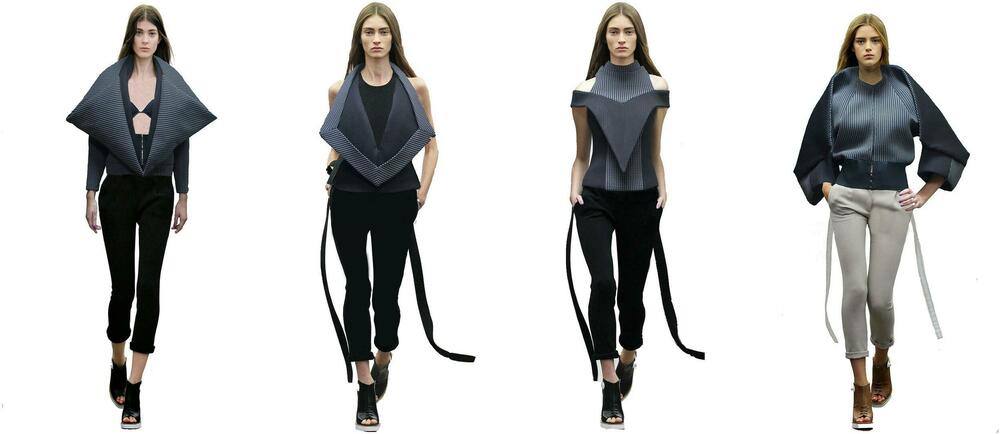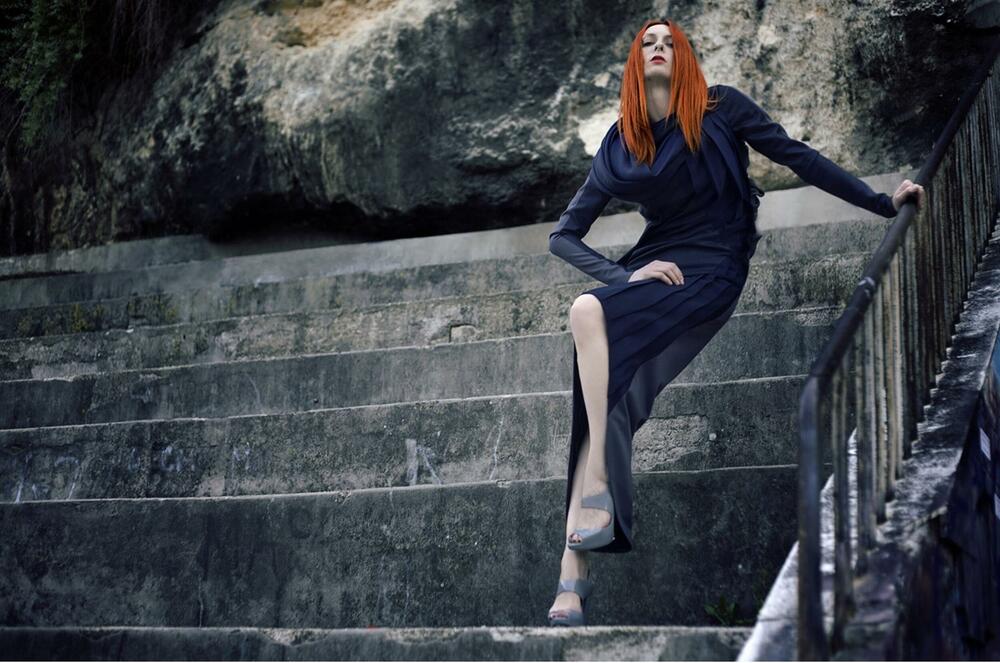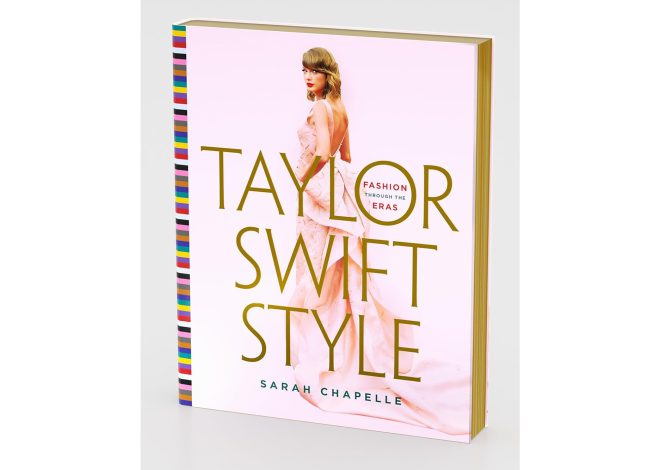
I like to see my pieces on the streets of my city
Fashion Designer, Boris Ćalić, this year is the only Montenegrin creator who, along with foreign colleagues, fashion houses Genny, Faith Connexion and Ezra Couture and designers Titian Giardini, to present their works at the International Fashion Festival, which will be held on July 19 and 20 in Porto Montenegro.
Ćalić says that his creations are “the result of a careful selection of materials, shapes and textures”, and that he believes that true inspiration comes from the harmony of these elements, and not from excessive extravagance.
“Every seam, every fabric and every detail has been thoroughly worked out to achieve a sense of understated elegance. The clothes I create reflect the idea that less can be more. My designs are simple yet extremely sophisticated. I believe that luxury does not have to be loud or lavish, instead, real luxury is found in carefully crafted pieces that give the wearer a sense of self-confidence and elegance”, explains the interviewee of “Vijesti”.
“In a world where fashion trends change rapidly, inspiration in discreet luxury represents a stable point. It’s a reminder that the most valuable things are often the ones you don’t have to show off, but carry with confidence. My philosophy of creating clothes is to inspire people to explore their unique expression through subtle details and simple elegance,” adds the Montenegrin fashion designer.
Given that, as emphasized by the Fabrika agency behind this event, this year the emphasis of the International Fashion Festival event is on sustainable fashion, Ćalić has prepared a collection that matches the theme for the occasion. This is not the first time that he focuses on sustainable fashion, that is, making models from natural and recycled materials, and the Montenegrin designer revealed more about all this in the “Vijesti” interview.
As recently announced, you will present your work at this year’s edition of the International Fashion Festival in Porto Montenegro, and it seems that your collaboration with Fabrik has become a tradition. How do you see this event and how important is it for Montenegro?
Agency Fabrika has a long tradition and reputation in our country as the most prestigious fashion event. As a student of fashion design, I always looked forward to Fashion Shows year after year with pleasure and closely observed the creations of world creators. After finishing my studies, as I built my fashion story, Vesna Mandic recognized my talent and potential and gave me the chance to be one of the participants. After the Fashion Show in Kotor, I am happy that this time I will be able to show my creations to the audience in Tivat and to meet side by side with world creators. The trepidation and responsibility are great, so I hope that this time I will be able to justify the expectations of the organizers and the audience.
Will your collection be specially made for this event? Can you tell us what you are preparing?
The collection was specially made for this event. This time, the focus is on sustainable fashion. Sustainable fashion is important because it makes it possible to reduce the negative impact of fashion on the environment and society, through the use of ecological materials, reduction of waste and support for fair working conditions. The collection is called “Cicada” and was created in collaboration with the L’Occitane brand. I drew inspiration from the botanical types of plants that this brand uses in its range. The initial guide through the research work was the land from which everything originates and is born. Thus, the color of the collection will include earthy tones in combination with yellow, ocher, orange, purple and olive. This is a kind of return to the use of color in my design, which has not been present in my creations since the first collection. The collection is made of pure biological silk. Unlike the previous collection where I recycled materials, this time I opted for a material that is not easily available. Precisely because of this, doing sustainable fashion in Montenegro is not easy. Sustainable fashion is created from ready-made garments, whether they are from second-hand stores or stores that sell vintage pieces. We know that Montenegro does not have an adequate offer in that domain, and that is also an obstacle in our work. Certainly, designers in Montenegro do not create serial production, because we do not have a developed fashion industry, and thus Montenegro is not threatened by mass production by creatives. One part of my work and the awareness of the fashion audience is to buy a wardrobe that is of better quality, to choose pieces that will last them. Honestly, sometimes I also fall into the trap of attracting more favorable pieces, but after one season that piece of clothing is no longer of the same quality and appearance, and therefore is not usable. That’s why it’s much better to buy less and smarter to invest in pieces that are not trendy, but can be worn from season to season. To some extent, that is also my mission in creating collections. I like to create clothes that can be worn for more than one season, with visible classics with my stamp. I don’t like to create pieces that are not functional, but I like to see my pieces on the streets of my city. It is the same with this collection.
How did you achieve that your collection meets the criteria of sustainable fashion?
I like to use extremely high-quality materials for my collections and I don’t want to create seasonally, but always stick to my principles, creating a kind of anti-fashion and pieces that are classic and never go out of fashion. When you buy my coat or suit, you will have something of quality for several seasons, which is more profitable than buying a new one every year. The design of original clothing items in the era of the modern continuous process of surpassing everything achieved and produced implies a kind of interpretive step forward, including the use of ecological and recycled materials. The point of this step forward is not to simply “glue” symbols of pre-modern clothing onto existing modern goods, but to produce, on the contrary, a set of meanings that, in itself, will guarantee an authentic approach.
Given that your previous collection presented on the Millennium Bridge also belonged to the segment of sustainable fashion, it seems that you are very interested in that area. Do you plan to go completely in that direction with your collections in the future?
Namely, the original desire for each of my works to be an expression of the uniqueness of the natural beauty and cultural identity of Montenegro, which I have integrated into all the pieces designed so far, has grown over time into a permanent direction of my creativity, which implies the fusion of materials and design with the natural environment with adequate implementation numerous elements from nature into a fashion creation. When I create these types of clothing, I rely exclusively on natural materials with expressive structures and colors, so I try to make every further processing and final design emphasize their beauty and complement each other with the environment. With this, I want to use my example to promote the attitude that creativity that respects ecological principles does not suppress the aesthetic dimension, but on the contrary supports top design. With my creations, I show that elegant does not exclude comfortable, and that formal and business formal does not have to deny comfort.

How important is sustainable fashion in general? For the uninitiated, how would you explain the difference between it and classic fashion?
I believe that sustainable fashion is essential for the future of our planet and society. It encompasses an approach to the design, production and consumption of clothing that takes into account environmental and social impacts. Sustainable fashion differs from classic fashion in several key aspects. First of all, it uses environmentally friendly materials, such as organic cotton, recycled fibers and natural dyes, while classic fashion often uses synthetic materials and chemicals that pollute the environment. Also, sustainable fashion focuses on fair working conditions and fair compensation for workers, and strives to create quality pieces that last longer, as opposed to fast fashion that produces clothes that wear out and change quickly, and often depends on cheap labor in poor conditions . Sustainable fashion is not just a trend, but a necessary step towards preserving natural resources and creating a fairer society. Through education and changing consumer habits, we can contribute to positive changes in the fashion industry together.
You recently received your doctorate, and you found inspiration for your work in folk costumes. Can you tell us more about that work?
My doctorate is the first fashion-anthropological review of folk costumes in Montenegro. This work is dedicated to understanding the relationship between folk costume and fashion. Problematizing the reduction of folk costumes to anti-fashion, which is taken as something objective and in itself, this research tries to look at the relationship between anti-fashion and fashion in an original way. The Montenegrin national costume was constructed at the time of the establishment of the Montenegrin national state: on the basis of artefacts, a traditional costume was created, which soon acquired a protocol function at the Montenegrin court, and then became an element of the Montenegrin national identity. Montenegrin folk costumes include decorations and techniques that phenomenally have certain meanings, as details that arise as part of pre-modern social frameworks. The choice of materials, composition of patterns, metrics – all this implies a symbolic set whose transparency is lost in subsequent interpretations, i.e. new-century meaning sets. The meanings of the Montenegrin folk costume are established in a different way in each historical context, in the new century epochal framework. In this sense, its reception was different at the time of the emergence of the Montenegrin modern state, different at the time when Montenegro, faced with Serbian hegemony, in the “first Yugoslavia”, lost its national characteristics. Its socialist reception and subsequent criticism of this reception during the crisis of the socialist system represent a new form of understanding.
The combination of sustainable fashion and tradition is very inspiring
To what extent is it possible to combine sustainable fashion and fashion inspired by traditional clothing?
This combination is not only possible, but also very inspiring. Traditional clothing often uses natural materials such as linen and wool, which are more environmentally friendly. The handwork and craftsmanship of traditional clothing contributes to its durability and uniqueness, which sustainable fashion can integrate to create longer-lasting pieces. Supporting local artisans through fashion like this helps preserve cultural heritage and reduce carbon dioxide emissions. Traditional clothing carries a rich cultural story, and incorporating these elements into sustainable fashion raises awareness of the importance of heritage and encourages more responsible customer behavior. Innovation and reinterpretation of old techniques in a contemporary context can result in unique and modern designs that are environmentally friendly and aesthetically appealing. In this way, sustainable fashion not only preserves and improves culture and tradition, but also creates harmony with nature and society. There are creators like Akka Costume who are cleverly dealing with the merging of sustainable fashion and cultural heritage.
Bonus video:

News


